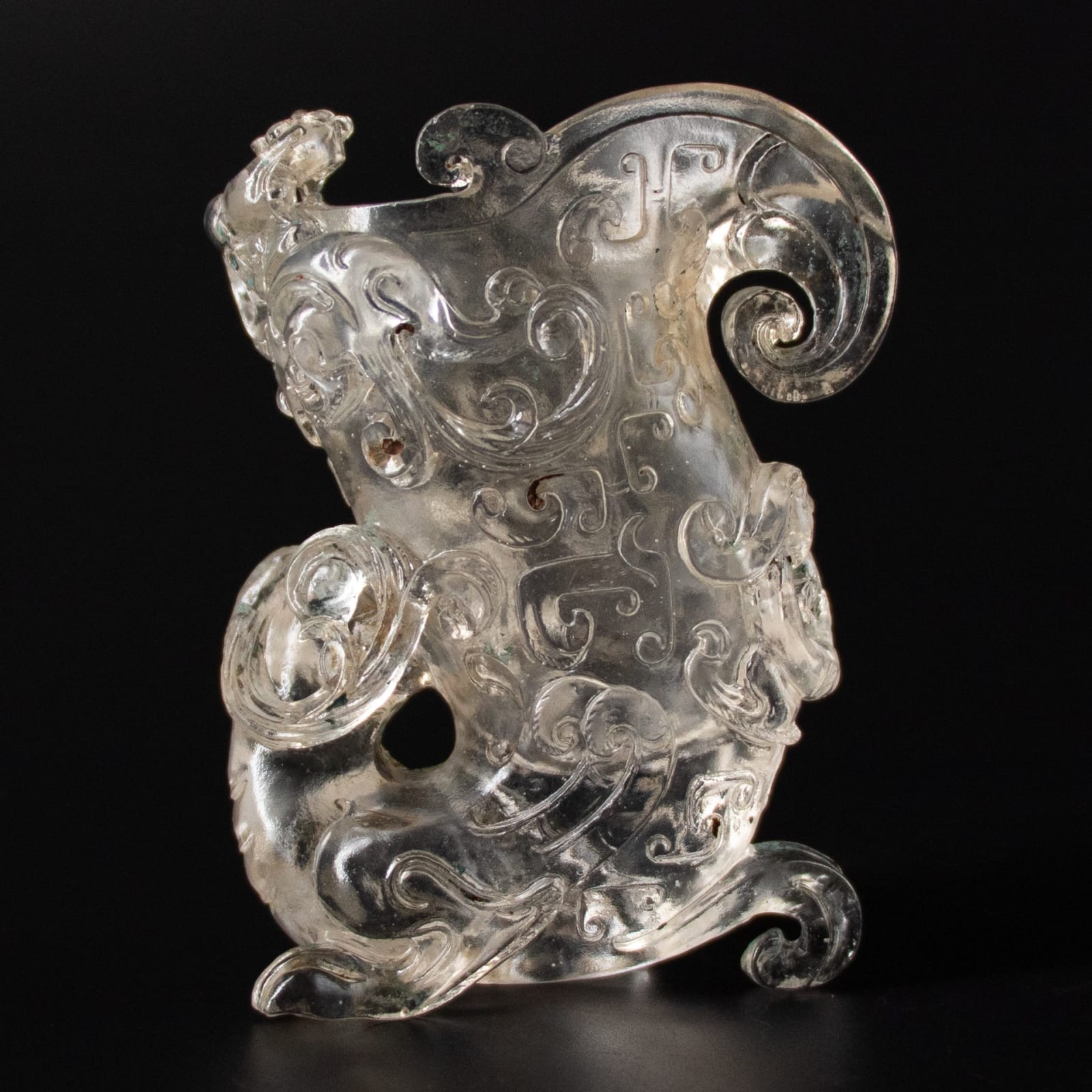Qing dynasty cast glass libation cup , 1644-1912 CE
Glass
ES.0194.22
A rare example of clear cast glass in the shape of a libation cup made in the style of carved rock crystal. The piece was manufactured by melting the glass...
A rare example of clear cast glass in the shape of a libation cup made in the style of carved rock crystal. The piece was manufactured by melting the glass in a mould, with some of the details which were incised by hand. The cup has waves motifs cleverly arranged in geometrical patterns. This type of glass has much in common with other contemporary arts: the elaborate shape and the detailed designs resemble those used for carving jade.
The vessel is in very good conditions with no sign of damage or deterioration of the glass. Comparable examples of cast glass objects similar to the one showed here can be found within the broader Qing glassmaking tradition. Examples of carved Chinese libation cups are usually found in other materials such as bronze, bone and jade, making this glass piece quite unique.
In the Qing dynasty (1644-1912) glassmaking witnessed a big revival, probably a result of the imperial support, as many ateliers which were working specifically for the palace were established. to The creation of these imperial workshops and their openness towards the introduction of western techniques, lead to the flourishing of Chinese glassmaking. Qing glass production was marked by enthusiastic support from the emperor, princes, and high officials and glass objects like the ones presented here were luxury articles. In the Kangxi period (1661-1722, the third emperor of the Qing dynasty) glass imitation of gems reached its peak, with clear glass used in place of rock crystal. Rock crystal was a material treasured by the Chinese people in the same way as they treasured jade and was a symbol of purity.
The vessel is in very good conditions with no sign of damage or deterioration of the glass. Comparable examples of cast glass objects similar to the one showed here can be found within the broader Qing glassmaking tradition. Examples of carved Chinese libation cups are usually found in other materials such as bronze, bone and jade, making this glass piece quite unique.
In the Qing dynasty (1644-1912) glassmaking witnessed a big revival, probably a result of the imperial support, as many ateliers which were working specifically for the palace were established. to The creation of these imperial workshops and their openness towards the introduction of western techniques, lead to the flourishing of Chinese glassmaking. Qing glass production was marked by enthusiastic support from the emperor, princes, and high officials and glass objects like the ones presented here were luxury articles. In the Kangxi period (1661-1722, the third emperor of the Qing dynasty) glass imitation of gems reached its peak, with clear glass used in place of rock crystal. Rock crystal was a material treasured by the Chinese people in the same way as they treasured jade and was a symbol of purity.
